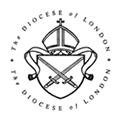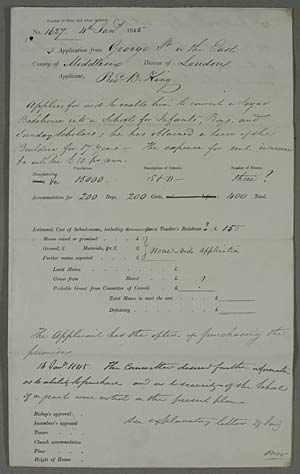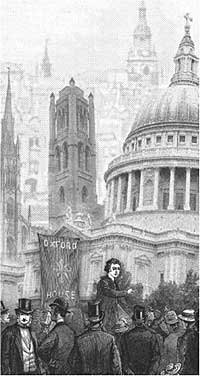How to Write a Church and Parish History: Reading about schools
- What can I read about school architecture?
- What can I read about the varieties of schools?
- What can I read about developing approaches to education?
- What can I read about what was taught in schools and life in schools?
- What can I read about teachers and their training?
What can I read about school architecture?
The only book is
Malcolm Seaborne, The English School: its architecture and organization, Routledge and Kegan Paul, London, 2 vols, 1971-77
What can I read about the varieties of schools?
The major histories of the Church in the nineteenth century have short but useful sections on schools and education. These help to outline the issues and conflicts that arose in the period about education
Owen Chadwick, The Victorian Church Part I and Part II, A&C Black, London, 1971-2.
G.I.T. Machin, Politics and the Churches in Great Britain 1832 to 1868, Clarendon Press, Oxford, 1977.
G.I.T.Machin, Politics and the Churches in Great Britain 1869 to 1921, Clarendon Press, Oxford, 1987.
In both of Machin's books check the index for ‘Education'
For the twentieth century, again, check the index of
Adrian Hastings, A History of English Christianity 1920-2000, SCM Press, 2001.
The standard works on the churches and education in England in the nineteenth century are
John Hurt, Education in Evolution: Church, State, Society and Popular Education 1800-1870, Rupert Hart-Davis, London, 1971.
John Hurt, Elementary Schooling and the Working Class 1860-1918, Routledge & Kegan Paul, London, 1971.
The provision, funding and inspection of schools, was an ecclesiastical and political battleground, primarily between the Church of England and the nonconformist churches, throughout the nineteenth and the early part of the twentieth centuries. These books set out the issues.
In addition to the Church of England's provision of schools through the agency of the National Society for the Education of the Poor in the Principles of the Established Church (hence ‘National Schools'), and, in London, The London Diocesan Board for Education, to provide elementary education (ie in reading, writing and arithmetic, and the Church Catechism, up to the age of 10), there were
- The British and Foreign Schools Society, mainly supported by Nonconformists which provided ‘British Schools'
- Wesleyan schools
- Congregational schools
- Roman Catholic schools
- Sunday Schools in all denominations
- ‘Private' or ‘Dame' schools (because they were usually run by women)
- ‘Ragged' schools mostly provided by evangelical Christian philanthropists or women's religious communities, for the poorest children.
- ‘Board Schools' funded by the London School Board, following the 1870 Education Act
An application for financial assistance to the National Society from St Georges in the East. The money was to ‘convert a Sugar Bakehouse into a School for Infants, Boys and Sunday Scholars (Image courtesy of the Trustees of Lambeth Palace Library).
For the National Society and National Schools see
C.K.Francis Brown, The Church's Part in Education 1839-1941, with Special Reference to the Work of the National Society, SPCK, London, 1941.
Henry James Burgess, Enterprise in Education: The Story of the work of the Established Church in the Education of the People prior to 1870, National Society, London, 1958.
H. J. Burgess and Paul Welsby, Short History of the National Society: 1811-1961 National Society, London, 1961.
Very little has been written about British and Congregational schools.
For Wesleyan schools see
John T.Smith, Methodism and Education 1849-1902: J.H.Rigg, Romanism and Wesleyan Schools, Clarendon Press, Oxford, 1998.
For Roman Catholic Schools see
W.J.Battersby, Secondary Education for Boys; W.J.Battersby, The Educational Work of the Religious Orders of Women 1850-1950 and A.C.E.Beales, The Struggle for the Schools, in The English Catholics 1850-1950, Essays to commemorate the centenary of the restoration of the Hierarchy of England and Wales, ed. George Andrew Beck, Burns Oates, London, 1950.
Maurice Whitehead, The View from the Bridge: The Catholic School, in From Without the Flaminian Gate: 150 Years of Roman Catholicism in England and Wales 1850-2000, eds V. Alan McClelland and Michael Hodgetts, Darton, Longman and Todd, London, 1999.
For ‘ Private' or ‘Dame schools' see
Paul Gardner, The Lost Elementary Schools of Victorian England: The People's Education, Croom Helm, London, 1984.
For ‘ragged' schools see
Kathleen Heasman, Evangelicals in Action: An Appraisal of the Social Work in the Victorian Era, Geoffrey Bles, London 1962 (ch. 5 for ragged schools).
Visit the Ragged School Museum , 46-50 Copperfield Road, London E3 4RR museum@raggedschoolmuseum.org.uk, which is in a former ragged school, and has a reconstructed classroom
For Sunday Schools see
Philip R.Cliff, The Rise and development of the Sunday School Movement, National Christian Education Council, Redhill, 1986.
For Board Schools see
David Rubinstein, School Attendance in London 1870-1904: A Social History, University of Hull Press, 1969.
What can I read about developing approaches to education?
Relatively little has been written about educational policies and practices. Hurt's two books provide useful introductory information. See also
Jane Martin, Women and the Politics of Schooling in Victorian and Edwardian London, Leicester University Press, 1999.
William Munden, Charles Booth and the social geography of education in late- nineteenth century London, in Retrieved Riches: Social Investigation in Britain 1840-1914, ed David Englander and Rosemary O'Day, Scolar Press, London, 1995.
What can I read about what was taught in schools and life in schools?
A good example of a history of a London school, giving an impression of life in the school is
Pamela and Harold Silver, The Education of the Poor: The history of a National School 1824-1974, Routledge & Kegan Paul, London, 1974.
What can I read about teachers and their training?
A useful introduction to the training of teachers may be found in
John Hurt, Education in Evolution: Church, State, Society and Popular Education 1800-1870, Rupert Hart-Davis, London, 1971,
John T.Smith, ‘A Victorian Class Conflict?' Schoolteaching, and the Parson, Priest and Minister, University of Sussex Press, 2008.







